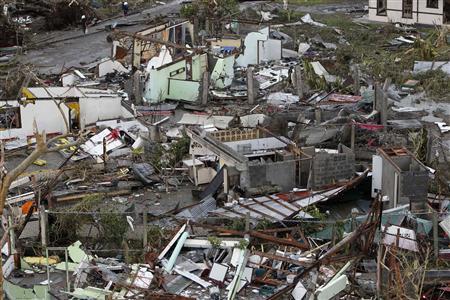Typhoon Haiyan, possibly the strongest storm ever to hit land, was barrelling out of the Philippines on Saturday (November 9) after it flattened houses, triggered landslides and floods and knocked out power and communications across a number of islands.
In the central Philippines, nearly all houses in Tacloban in Leyte province with a population of about 220,000, were toppled and casualties were feared to be massive, a disaster official said.
Footage showed the devastation the typhoon left behind, one villager carried his dead six year old child, who died while inside an evacuation centre during the typhoon's landfall. The cause of the death was not clear.
At least 100 people may have died from the impact of super typhoon Haiyan, a senior government official said on Saturday.
Bodies were lying in the streets, according to an initial report from an aviation officer in the central city of Tacloban, said Captain John Andrews, deputy director general of the Civil Aviation Authority of the Philippines.
Haiyan, a Category-5 typhoon, had weakened after hitting land at least five times in the Philippines, but weather forecasters said it could strengthen again as it passes over the East Sea before heading to Vietnam on Sunday.
The typhoon was hovering 440 kilometers west of San Jose, in southwestern Occidental Mindoro province, packing winds of a maximum 175 kph, with gusts of up to 210 kph.






















































